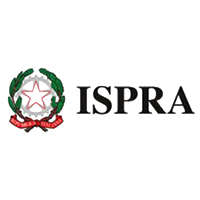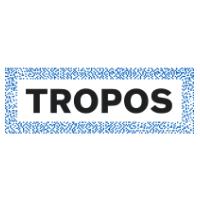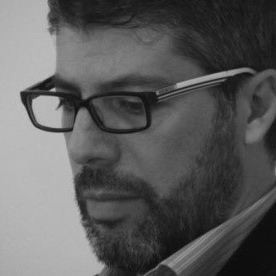Consortium
The SMURBS consortium consists of 19 ERA‐PLANET partners from 12 European countries, including research institutes, space agencies and universities, EO experts of different disciplines and scientific background, in several thematic areas. The collective expertise these partners bring in covers a wide variety of EO (in situ, remote sensing, modeling, innovative observational platforms) that will be refocused during the project to serve the smart city paradigm. Apart from the “hard EO science”, the expertise also covers advanced IT and know‐how for data processing, data representation, cataloguing, querying and portal developments as well as semantics resources.

SMURBS combines:
- Scientific Excellence in relation to the environmental challenges in the complex urban setting
- Solid experience in maintaining and operating high‐performance, large coverage infrastructures
- Operational experience in disaster management
- Geographic coverage ‐ critical mass
- Extensive experience from coordination of and/or involvement in GEO/GEOSS and Copernicus projects
- Interoperability/semantics resources
- Expertise and hands‐on experience in the deployment of novel in situ observation systems
Partners
NATIONAL OBSERVATORY OF ATHENS (NOA)
The National Observatory of Athens (NOA) is the oldest public research center in Greece (founded in 1842), supervised by the General Secretariat of Research and Technology (GSRT). The activities of the National Observatory of Athens are organized in 3 research Institutes: The Institute of Astronomy, Astrophysics, Space Applications and Remote Sensing, the Institute of Environmental Research and Sustainable Development, and the Geodynamics Institute. (http://www.noa.gr)
CONSIGLIO NAZIONALE DELLERICERCHE (CNR)
The National Research Council of Italy (CNR) is a public organization, its duty is to carry out, promote, spread,transfer and improve research activities in the main sectors of knowledge growth and of its applications for the scientific, technological, economic and social development of the Country. ( www.cnr.it)
IDRYMA IATROVIOLOGIKON EREUNON AKADEMIAS ATHINON (AOA)
The “Idryma Iatroviologikon Ereunon Akadimias Athinon” (or Academy of Athens, AoA) is a non-profit research center in Greece, founded in 1926. AoA’s latest major contribution to research is the internationally enowned Foundation of Medical and Biological Research (BRFAA), which has been operating under its supervision since 2002. (http://www.bioacademy.gr)
ARISTOTELIO PANEPISTIMIO THESSALONIKIS (AUTH)
The Aristotle University of Thessaloniki (AUTH) was founded in 1925 and is today the largest university in the country, with about 80.000 students and 2.300 teaching/research staff. At present, in the Aristotle University there are 10 faculties, consisting of 49 departments. (www.auth.gr)
CENTRE NATIONAL DE LARECHERCHE SCIENTIFIQUE (CNRS)
The French National Centre for Scientific Research (CNRS) is a government-funded research organization, under the administrative authority of France’s Ministry of Research. CNRS is the largest fundamental research organization in Europe. It is organized through ten institutes and is involved in all scientific fields including life sciences, physics, chemistry, mathematics, computer science, earth science and astronomy, humanities and social sciences, environmental sciences and sustainable development, and engineering. (www.cnrs.fr)
CREAF
CREAF is a public research institution created in 1987 and located in Catalonia. CREAF’s main objective is to generate knowledge and create new methodological tools in the fields of environmental sciences and ecology.(www.creaf.cat)
HELMHOLTZ-ZENTRUM GEESTHACHT ZENTRUM FUR MATERIAL- UND KUSTENFORSCHUNG GMBH (HZG)
The Helmholtz-Zentrum Geesthacht Zentrum für Material- und Küstenforschung GmbH (HZG) is one of 18 members of the Helmholtz Association of German Research Centres, Germany’s largest science organisation. HZG comprises four research institutes and the Climate Service Centre Germany (GERICS), the latter being a development centre which offers products, advisory services and decision-relevant knowledge based on sound scientific evidence in order to support government, administration and business in their efforts to adapt to climate change. (www.hzg.de)
ISTITUTO SUPERIORE PER LA PROTEZIONE E LA RICERCA AMBIENTALE (ISPRA)
The Italian National Institute for Environmental Protection and Research (ISPRA) is a public body and a research institute, with technical, scientific, organizational, managerial, administrative and financial autonomy, subject to the vigilance of the Ministry for the Environment, Territory and Sea.
IVL SVENSKA MILJOEINSTITUTET AB (IVL)
IVL Swedish Environmental Research Institute is an independent, non-profit research institute, owned by a foundation jointly established by the Swedish Government and Swedish industry. IVL was established in 1966 and has since then been involved in the development of solutions to crucial environmental problems, both at national and international level.( http://www.ivl.se)
INSTITUT JOZEF STEFAN (IJS)
The “Jožef Stefan” Institute (JSI) founded in 1949, is a research organization for pure and applied research in the natural sciences and technology. In view of its activities and status, JSI plays the role of a national Institute, complementing the role of the universities and bridging the gap between science and application. (www.ijs.si)
MASARYKOVA UNIVERZITA (MU)
The Research Centre for Toxic Compounds in the Environment (RECETOX) of Masaryk University (MU) has an expertise in environmental monitoring, assessment of fate and impacts, human exposure, health effects and risks related to anthropogenic and natural toxins.( www.recetox.muni.cz )
NATIONAL CENTER FOR SCIENTIFIC RESEARCH “DEMOKRITOS” (NCSR)
The National Center for Scientific Research “Demokritos” (NCSR “Demokritos”) is the largest multidisciplinary research center in Greece, with critical mass in expertise and infrastructure in the fields of Energy & Environment, Nanotechnology, Biosciences, Particle and Nuclear Science, Informatics and Telecommunications.( www.demokritos.gr)
PAUL SCHERRER INSTITUT (PSI)
The Paul Scherrer Institut (PSI) in Switzerland is a centre for multi-disciplinary research and one of the world’s leading user laboratories. With its 1200 employees it belongs as an autonomous institution to the Swiss ETH domain and concentrates its activities on solid-state research and material sciences, energy and environmental research as well as on biology and medicine.( www.psi.ch)
SPACE RESEARCH INSTITUTE OF THE NATIONAL ACADEMY OF SCIENCES OF UKRAINE AND THE NATIONAL SPACE AGENCY OF UKRAINE (SRI)
Space Research Institute of the National Academy of Sciences of Ukraine and State Space Agency of Ukraine (SRI NASU-SSAU) is a leading organization in R&D of methods and information technologies, and delivery of corresponding services in the Earth observation domain. (http://www.ikd.kiev.ua))
LEIBNIZ INSTITUT FUER TROPOSPHAERENFORSCHUNG e.V. (TROPOS)
The Leibniz Institute for Tropospheric Research (TROPOS) is an independent research institution with about 150 employees and is member of the Leibniz Association, one of the German nonuniversity research organizations. The institute has a well-defined research profile with focus on aerosol and clouds. (www.tropos.de)
UNIVERSITA DELLA CALABRIA (UNICAL)
University of Calabria participates in the project with the research unit Labdoc, which is part of the Department of Languages and Education. It was created on April 23, 1996. Labdoc brings together all the expertise in the areas of archival and documentation studies at the University. It is considered a national reference centre for research and consultancy in the fields of documentation organization and management, of indexing and classification systems, and of knowledge and content management, obtaining the recognition of Unesco as an accredited centre and the assignment of significant commissions by both the public and private sectors (www.unical.it)
ROMANIAN SPACE AGENCY (ROSA)
Independent public institution legal person fully self-financed, organized by the Government Decision no.923/1995 and defined by Law no.500/2002, in the system of the Ministry of Education and Research. The main mission of ROSA is to promote, coordinate and develop space research and applications programs/projects in Romania and to represent the Government in relevant international cooperation agreements.( www.rosa.ro)
STOCKHOLMS UNIVERSITET (SU)
The Department of Environmental Science and Analytical Chemistry (ACES) of Stockholm university (SU) is a multidisciplinary department that gathers scientists from diverse fields in the natural sciences to study environmental phenomena.(www.su.se)
HELSINGIN YLIOPISTO (UHEL)
Helsingin yliopisto (University of Helsinki, UHEL) is a European research university with over 34,000 students and 8,000 employees. UHEL is the largest and most versatile university in Finland and ranks among the top 100 universities worldwide. It is a research university with many Academy of Finland designated National Centres of Excellence (10 for 2012-2017, 11 for 2014-2019). Division of Atmospheric Sciences, Department of Physics at UHEL has over 30-year tradition in atmospheric research and research coordination, including coordination of several Framework Programme projects.( www.helsinki.fi)
People
Dr. Evangelos Gerasopoulos (NOA) – Project Coordinator /WP1, WP7 Leader
Overall Project Coordinator, responsible for ensuring the project runs efficiently, resources are properly allocated, and deliverables are developed and delivered according to the work plan and quality standards. He ensures the effective cooperation between the partners and the Project Management Support Team and oversees interaction of the Project Executive Board with the ERA-PLANET Advisory Boards and the Steering Committee and/or the GA General Assembly. Dr. Gerasopoulos is also Leader of WP1 “Project Management” and WP7 “Dissemination, communication and exploitation”.
- Member of GEO Programme Board (2015 – today)
- Director of the Greek GEO Office (2014 – today) and member of the 5th and 6th (final) GEOSS Evaluation Teams.
- Member of the Board of the Hellenic Quality Assurance and Accreditation Agency (HQA) (2017-today)
- Member of the Sectorial Scientific Council for the Environment and Energy of the National Council for Research and Technology (2014 – today)
- Member of the Steering Committee of the Navarino Environmental Observatory at Costa Navarino, Messinia-Greece (2010 – today)
- Head and Quality Assurance Manager of the Laboratory of Atmospheric Chemistry (IERSD/NOA), accredited by the Hellenic Accreditation System S.A. for air quality measurements and chemical analyses according to ELOT EN ISO/IEC 17025 (2007 – today)
- Member of the editorial board of Atmospheric Chemistry and Physics, European Geophysical Union
- 70 publications in peer-reviewed scientific journals and >130 in conferences/proceedings etc, >2200 citations, out of which ~2000 from third-party, h-index 27
Dr. Eleni Athanasopoulou (NOA) – Project Management Support Team/ responsible of modeling activities at NOA
The members of the Project Management Support Team (which includes the Project Coordinator as head) contribute in (i) the communication, coordination and representation of SMURBS at ERA-PLANET’s Steering Committee and/or the GA General Assembly; (ii) facilitating efficient and effective project coordination (including management responsibilities) and official representation; (iii) enabling coordinated reporting processes for internal and external reports, the final report and the overall quality control procedures for deliverables; (iv) distributing ERA-PLANET material from and to SMURBS partners and relevant recipients; (v) continuous monitoring of WPs’ progress and for implementing potential corrective actions to ensure timely delivery.
- Dr. Eleni Athanasopoulou has 15 years expertise on atmospheric modelling (atmospheric chemistry, aerosol, gaseous species)
- Atmospheric chemistry of particulate matter (ions, metals and organic compounds)
- Operation of the atmospheric models COSMO-ART, CAMx
- Experience in aerosol radiative effects
- 34 publications in Scientific Journals and Conferences, >100 citations
Georgia Diakogianni, MSc (NOA) – Communication Manager / Project Management Support Team
Responsible for the implementation of the Communication and Dissemination Strategy and Action Plan, part of WP7 “Dissemination, communication and exploitation”, whose main objective is to ensure that the impact of SMURBS project is maximized through an effective campaign of communication, dissemination and exploitation activities.
- Research Fellow at NOA since 2005
- Research DInSAR and Remote Sensing Specialist in the ESA funded project “Disaster risk reduction using innovative data exploitation methods and space assets”, as well as in the FP7-REGPOT-2012-2013-1 “BEYOND Centre of Excellence” (2013-2015) as an Administrative- Secretarial support member
- Member (2005-2012) of the Geodynamic Institute of NOA (NOAGI) servicing at the 24/7 monitoring and processing of the recorded seismic activity in Greece.
- Participated at the EU-FP6 tsunami research project SCHEMA (2007-2010), at the ZIP EU project, as well as at the internal research project EARTHWARN (2011) of NOAGI
- Member in the organizing committees of international conferences organized by NOA (2003-2017) and co-author of original papers in journals and conference presentations
Orestis Speyer (NOA) – Project Management Support Team/ modeling activities at NOA
The members of the Project Management Support Team (which includes the Project Coordinator as head) contribute in (i) the communication, coordination and representation of SMURBS at ERA-PLANET’s SC and/or the GA; (ii) facilitating efficient and effective project coordination (including management responsibilities) and official representation; (iii) enabling coordinated reporting processes for internal and external reports, the final report and the overall quality control procedures for deliverables; (iv) distributing ERA-PLANET material from and to SMURBS partners and relevant recipients; (v) continuous monitoring of WPs’ progress and for implementing potential corrective actions to ensure timely delivery.
- Orestis Speyer (NOA), MSc is a Research Fellow at NOA since 2014
- 5 years expertise on atmospheric modelling (atmospheric chemistry, aerosol, meteorology)
- Operation of the atmospheric models COSMO-ART, WRF
- Experience in aerosol radiative effects, PhD candidate in Aerosol-Cloud interactions
Dr. Volker Matthias (HZG) – WP2 Leader / Head of SMURBS modeling activities
Leader of WP2 “User requirements and gap analysis” and is also in charge of SMURBS modeling activities.
- Head of Chemistry Transport Modelling department at HZG
- Long term experience in atmospheric chemistry transport modelling and in ground based remote sensing techniques for the observation of air pollutants.
- Member of the Scientific Steering Committee of the International Technical Meeting on air pollution modelling and its application (ITM)
- Participation and work package coordination in more than 10 EU (FP6, FP7, Interreg, LIFE, BONUS Baltic Sea) and nationally funded projects (BMBF, BMVI)
- 60 publications in peer-reviewed scientific journals, >1100 citations, h-index 20
- Teaching experience since 2003 at the Universities of Hamburg and Lüneburg
- Supervision of more than 10 PhD, Master and Bachelor students
Dr. Palma Blonda (CNR-IIA) – WP3 Leader / Head of Migration Theme
Leader of WP3 “EO based and citizen observatories data collection, processing and analysis” and is also the leader in SMURBS Migration Theme.
- Senior Researcher at CNR-IIA. Research activity focuses on multi-source Earth Observation (EO) data segmentation, classification, data fusion, change detection. She developed soft computing techniques and expert knowledge driven approaches
- Coordinator of the FP7-SPACE.2010.1.1-04 project titled: BIOdiversity Multi-Source Monitoring System: from Space TO Species
- Currently involved in the Horizon 2020 ECOPOTENTIAL project (GA. 641762) for EO data classification and change detection.
- Partner of the HORIZON2020 ConnectinGEO project, the FP7-ENV- 2009-1-244088-FIRESENSE project focusing on the protection of Cultural Heritage Areas from the Risk of Fire and Extreme and LEWIS-EVG1-CT-2001- 00055, focusing on the development of a Landslide Early Warning Integrated System
- >170 publications including peer-reviewed scientific journals and conferences/proceedings etc, h-index 19
Astrid Raudner (ISPRA) – WP4 Leader
Leader of WP4 “Added value products’ specifications and synergistic development”.
- In ISPRA since 2000
- Working with GIS and on the interpretation of satellite imagery for land monitoring
- Interpreting Copernicus Satellite imagery of the Italian Reports on Soil Consumption, Copernicus Land Monitoring Services validation and quality check of Riparian Zone Green Linear Elements, Corine Land Cover, Forest Type and Tree Cover Density, GIO-Land Natural Grassland, Wetland, Waterbodies and Urban Atlas
Dr. David Kocman (JSI) – WP5 Leader
Leader of WP5 “Smart City pilots and case studies”.
- Head of Informatics group
- >10 years of experience in data analysis and interpretation including modelling of environmental fate and chemistry of pollutants
- Experience in field and laboratory measurements related to global biochemical cycles and air pollution
- Experience in spatial data infrastructure evaluation based on EGIDA methodology
- Use of Geographical Information Systems (ΑrcView- GIS) for variety of environmental applications, spatial data acquisition and management
- Experience in participatory sensing and testing of Citizens Observatory concepts
Dr. Stefano Nativi (CNR-IIA) – WP6 Leader
Leader of WP6 “ERA‐PLANET principles and KETs for interoperability”.
- Head of the Florence Division of CNR-IIA, scientific coordinator of the theme “Open Data and Interoperability” for the Earth System Science Department of CNR. In charge of the DAB provision to the GCI
- Co-chair of the “GEOSS Architecture evolution” WP of the GEOSS Initiative: “GEOSS Evolve”. Member of the GEOSS Programme Board representing Italy as alternate
- Member of the Expert Panel of the Copernicus Data Dissemination and Big Data Strategy Member of the Scientific and Technical Advisory Committee (STAC) of the Copernicus Marine Environment
Prof. Dr. Urs Baltensperger (PSI) – Head of Air Quality Theme
- Laboratory Head Laboratory of Atmospheric Chemistry of Paul Scherrer Institute
- Scientific expertise: over 35 years of research experience related to research on atmospheric aerosols. Coordinator of an FP6 EU project and member in steering groups of numerous EU projects.
- Member of the Presiding Board of the Swiss National Science Foundation.
- Professor at ETH Zurich. He has supervised more than 50 PhD theses and is currently supervising 19 on-going PhD theses.
- Published more than 400 peer reviewed articles, including 13 in Nature and Science, with more than 24’000 total citations and an h-factor of 78. Highly cited researcher (Thomson Reuters) in 2014, 2015, 2016 and 2017.
- Obtained a number of awards, including the Fellow of the American Geophysical Union (2012), the Vilhelm Bjerknes Award of the European Geosciences Union (2014), the Fuchs Memorial Award of the International Aerosol Research Assembly (2014), and the Spears Memorial Award of the Royal Chemical Society (2016).
Dr. Charalampos (Haris) Kontoes (NOA) – Head of Disasters Theme
- Expert in Remote Sensing of Environment. Solid professional experience in the coordination of 30+ EC, ESA, and national/regional competitive projects funded in the context of framework initiatives e.g. FP6, and FP7, COPERNICUS, GEO, EOEP/ESA, DUE/ESA, Civil Protection Instrument/DG ECHO, GSE/ESA, CAP/DG AGR, etc. (indicative projects: BEYOND FP7 REGPOT 2012-2013 project; RISK-EOS extension to Greece/ESA-GSE; MASSIVE FP7 DG ECHO; EMS Copernicus Risk &Recovery; CLC and CLC-Change 2000 projects in Greece EC EEA; TELEIOS FP7 EC-ICT; LIMES FP6 Security GMES etc.)
- National Delegate for Space (national delegations in the context of International Organisations’ Decision Making Boards and Space Committees (e.g. the ESA PBEO, the EC Space Committees (Fp7, H2020), the GMES Steering Committee, the EC Space Advisory Committee, etc).
- National Point of Contact (NPC) of ESAʼs CollGS initiative.
- >110 publications in reviewed journals and scientific conferences. Member of the editorial boards and reviewer of highly ranked Scientific Journals (IJPRS, IJRS, SENSORS, IEEE Geoscience and RS)
- Winner of the Copernicus Masters Best Challenge Service 2014 (The FIREHUB Service) (http://ocean.space.noa.gr/FireHub)
Prof. Nataliia Kussul (SRI) – Head of Urban Growth Theme
- Deputy Director and Head of Space Information Technologies Department at SRI NASU-SSAU
- Doctor of Sciences (second scientific degree) in Applied Mathematics from SRI NASU-NSAU in 2001, and Ph.D. degree in Applied Mathematics from the Institute of Cybernetics of NASU in 1991. Main research activities and expertise: Big Data in Remote Sensing, Machine Learning Techniques for Geospatial Data, GIS, distributed computing, Sensor Web, intelligent computations and their applications in agricultural and disaster management domain
- Head of the UN-SPIDER RSO in Ukraine Representative from Ukraine in the CEOS Working Group on Information Systems and Services (WGISS)
- PI for numerous national and international projects from National Academy of Sciences of Ukraine, State Space Agency of Ukraine, EC-FP7, ESA, EC-JRC, CRDF, and STCU Coordinator of GEOGLAM-Ukraine initiative, JECAM-Ukraine test site, Co-PI from Ukrainian side of FP-7 “SIGMA” and Horizon-2020 “ERA-PLANET” project, coordinator of national level demonstration within ESA “Sen2Agri” project
- Author of more than 80 publications in peer-reviewed scientific journals and 5 books in these areas, h-index 15
Dr. Pavel Čupr (MU) – Head of Health Theme
- Senior researcher at Research Centre for Toxic Compounds in the Environment
- Central and Eastern European Centre for Persistent Organic Pollutants (CEEPOPsCTR) – organizing secretary
- National POPs Centre – organizing secretary
Ecotoxicology – research scientist in ecological and human health risk assessment resulting from exposure to toxic and genotoxic compounds (POPs and other xenobiotics), genotoxicity

































